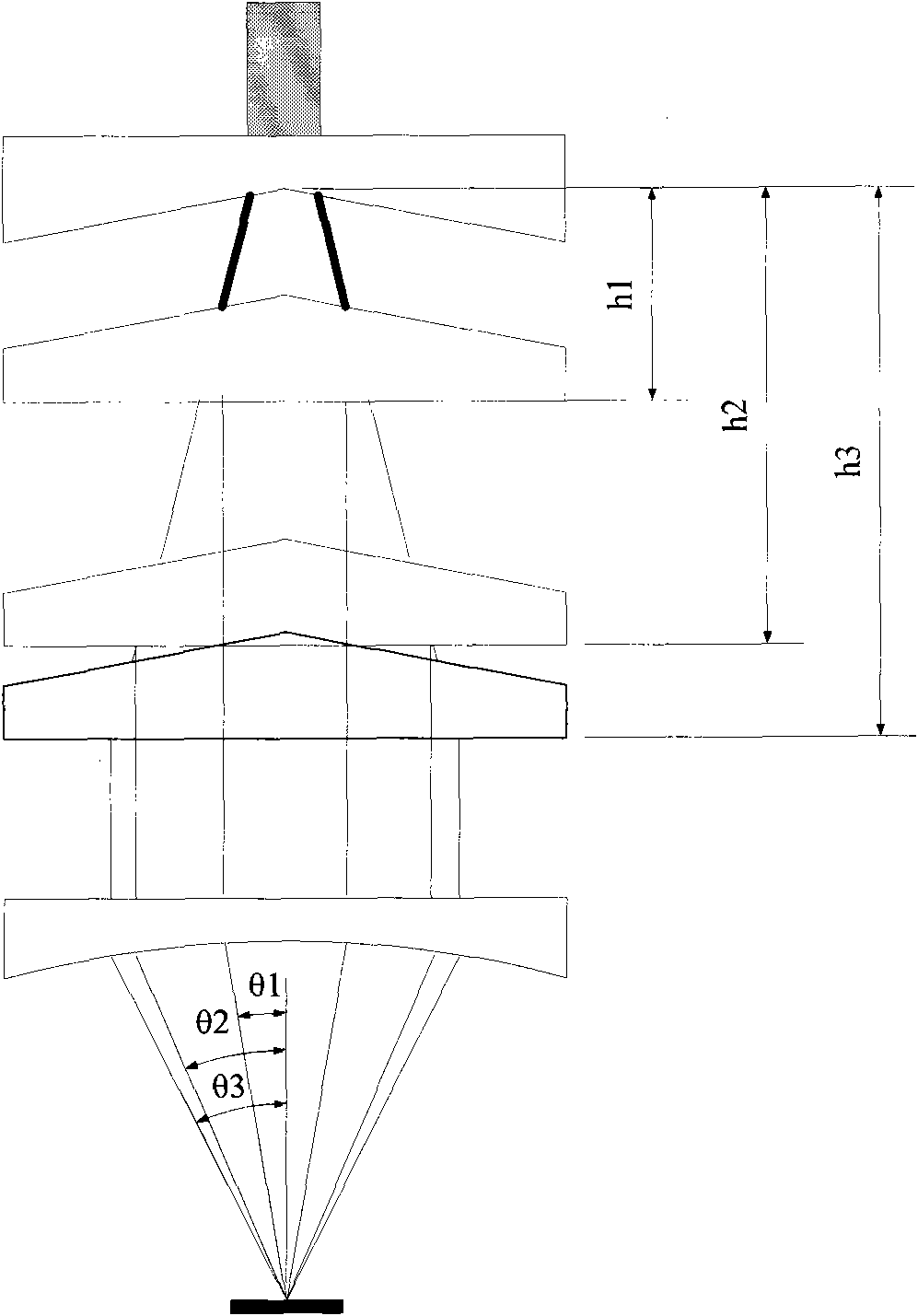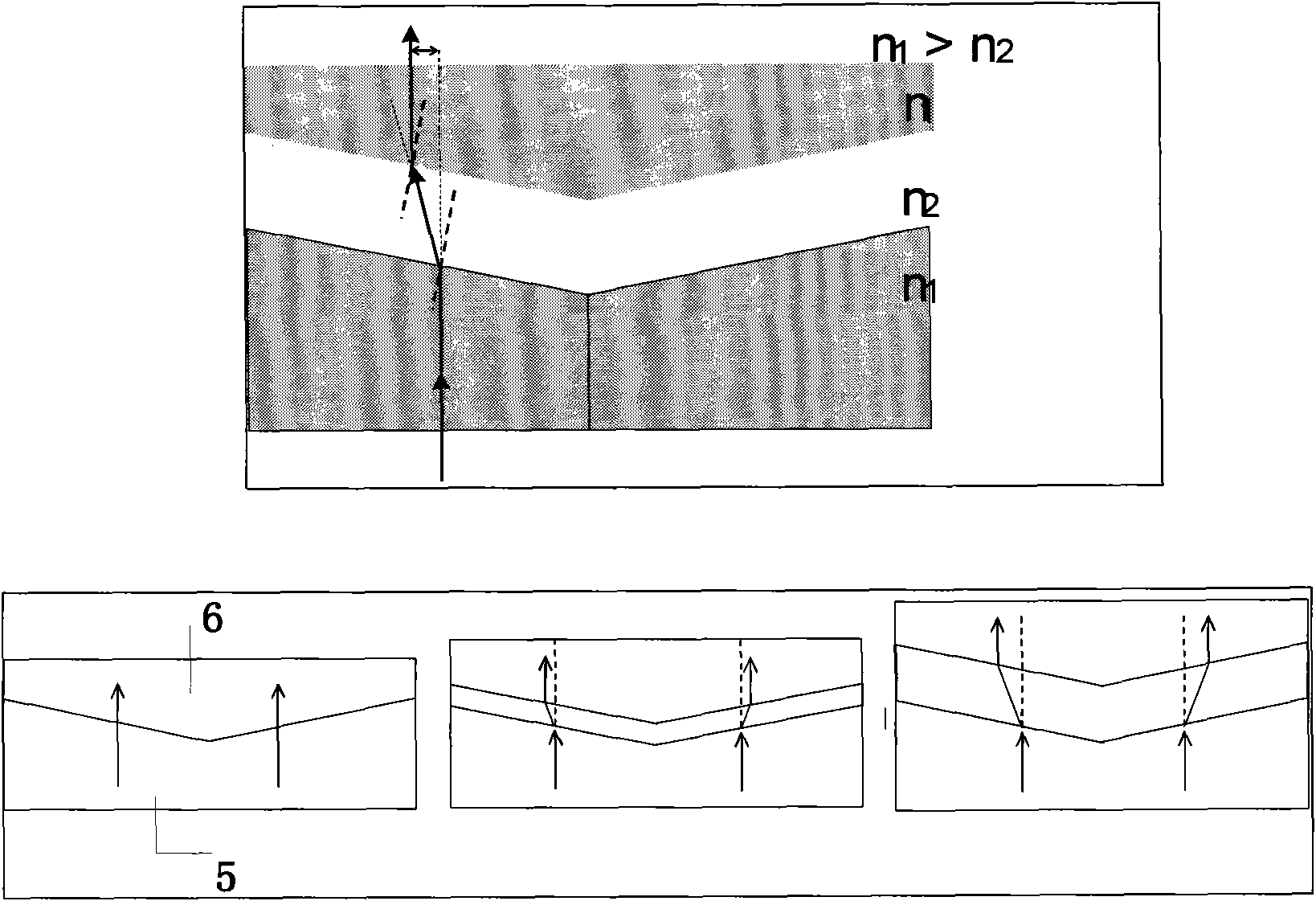Exposure device and method of same
An exposure device and exposure method technology, applied in the field of interference exposure and exposure, can solve the problems of inability to effectively adjust the resolution, achieve the effect of continuously adjustable pitch, and improve the utilization rate of energy
- Summary
- Abstract
- Description
- Claims
- Application Information
AI Technical Summary
Problems solved by technology
Method used
Image
Examples
Embodiment 1
[0029] see figure 1 and 2 As shown, an interference exposure device with continuously adjustable resolution in this embodiment includes four parts: an illumination unit 1, a prism assembly 2, an interference head 3, and a stage unit 4. The z direction in the figure is the opposite direction along the optical path. The x direction is the horizontal right direction, and the x direction to the z direction satisfy the right-hand law.
[0030] Wherein, the illumination unit 1 includes a light source 101, a beam expander 102 and a reflector 103; the prism set 2 is composed of two wedge prisms 201, 202; the interference head 3 is a curved mirror; the stage unit 4 includes a slide table 401 and The carried substrate 402 may specifically be a glue-coated substrate.
[0031] The working process of the device is as follows:
[0032] A light source 101 (usually a laser) emits a parallel coherent beam 104 with a wavelength of λ, which is expanded by a beam expander 102 to form a spot of...
Embodiment 2
[0045] Another embodiment of the interference exposure device of the present invention is as Figure 5 As shown, it includes an illumination unit 1 , a prism set 2 , an interference head 3 ′, a wafer stage 401 and a base.
[0046] The difference between this embodiment and Embodiment 1 lies in the different interference heads used. The interference head 3' in this embodiment is a prism, its incident surface and outgoing surface are planes, and the reflection surfaces on both sides are paraboloids. Record its appearance for:
[0047] x 2 =2p(z-c)p>0 (4)
[0048] Among them, p is the focal length, c is the distance between the vertex of the paraboloid and the x-axis, and the exit surface passes through the focal point of the paraboloid Therefore, according to the properties of the paraboloid, it can be known that all parallel incident light beams converge at the focal plane where the focus of the paraboloid is located, so no matter how the resolution is adjusted, the converg...
PUM
 Login to View More
Login to View More Abstract
Description
Claims
Application Information
 Login to View More
Login to View More - R&D
- Intellectual Property
- Life Sciences
- Materials
- Tech Scout
- Unparalleled Data Quality
- Higher Quality Content
- 60% Fewer Hallucinations
Browse by: Latest US Patents, China's latest patents, Technical Efficacy Thesaurus, Application Domain, Technology Topic, Popular Technical Reports.
© 2025 PatSnap. All rights reserved.Legal|Privacy policy|Modern Slavery Act Transparency Statement|Sitemap|About US| Contact US: help@patsnap.com



